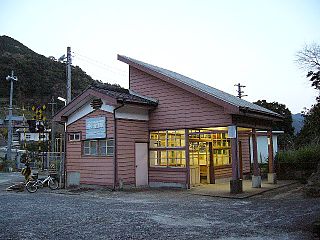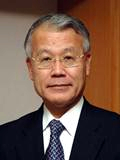
Marc Marie de Rotz(26 March 1840 - 7 November 1914) was a French missionary belonging to the Paris Foreign Missions Society. Upon arriving in Japan in June 1868, de Rotz engaged in missionary and social welfare work in the Sotome region of Nagasaki.

Marc Marie de Rotz(26 March 1840 - 7 November 1914) was a French missionary belonging to the Paris Foreign Missions Society. Upon arriving in Japan in June 1868, de Rotz engaged in missionary and social welfare work in the Sotome region of Nagasaki.
Marc Marie de Rotz was born on 26 March 1840 in Bayeux in Normandy, France to a royal family descended from Napoleon. After receiving strict schooling from his parents, in 1848, he enrolled in the Congregation of Holy Cross school in Orléans.
In 1860, de Rotz enrolled in the seminary in Orléans, and two years later transferred to the Paris Foreign Missions Society seminary. However, due to illness he dropped out of school, returned to his hometown, and enrolled in the seminary in Bayeux. Upon his graduation and ordination there in 1865, he was installed as assistant priest of the Saint Julian Church in Caen. In 1867, he became a member of the Paris Foreign Missions Society.
Around this time, priest Bernard Petitjean, who had been involved in missionary work in Nagasaki, returned to France and was recruiting missionaries who had knowledge of printing techniques. de Rotz responded to Petitjean's call, and in June 1868 went to Japan. After engaging in missionary work in Nagasaki, he was reassigned to Yokohama in 1871 where he published the earliest texts using the lithographic process in Japan. In the same year, he assisted the Sisters of the Infant Jesus in the construction of the Saint Maur International School, the oldest international school in Japan.
In 1873, the Meiji government lifted the nationwide ban on Christianity, allowing the Japanese Christians exiled as a result of the Urakami Yoban Kuzure to return to their homes in Nagasaki. de Rotz took this opportunity to return to Nagasaki and began to publish printed materials. In 1874, an outbreak of dysentery in Iōjima spread to the Urakami region, especially affecting the Christians who had recently been freed from exile. In response, de Rotz tended to them by giving them medicine and advising them on how to avoid contracting the infection.

In 1878, de Rotz became the head priest of Shitsu Church, ministering to followers who had recently rejoined the Catholic Church as well as Kakure Kirishitan living in the Sotome region. Recognizing the poverty and the high number of orphans in the region, de Rotz established an orphanage in 1880, followed by a relief center in 1883. At the relief center, de Rotz, with the help of a number of Catholic sisters, led the production of woven and knitted fabrics, noodles, macaroni, bread, and soy sauce. Items such as bedsheets and macaroni would be sold to the nearby foreign settlement, while noodles and soy sauce would be sold to the local population. In 1886, de Rotz opened a clinic to help cure those afflicted with infectious diseases. In 1914, while working on the construction of the Oura Church diocese, de Rotz fell off from the scaffolding and died the following day, November 7. He was buried in a cemetery in Shitsu.

Takashi Nagai was a Catholic physician specializing in radiology, an author, and a survivor of the atomic bombing of Nagasaki. His subsequent life of prayer and service earned him the affectionate title "saint of Urakami".

The Immaculate Conception Cathedral (無原罪の聖母司教座聖堂) also St. Mary's Cathedral, often known as Urakami Cathedral after its location Urakami, is a Roman Catholic cathedral located in Motoomachi, Nagasaki, Japan.

The Basilica of the Twenty-Six Holy Martyrs of Japan (日本二十六聖殉教者聖堂) also Ōura Church is a Roman Catholic minor basilica and Co-cathedral in Nagasaki, Japan, built soon after the end of the Japanese government's Seclusion Policy in 1853. It is also known as the Church of the 26 Japanese Martyrs. For many years it was the only Western-style building declared a national treasure, and is said to be the oldest church in Japan.

Urakami Station is a railway station in Kawaguchi-chō, Nagasaki, Nagasaki Prefecture, Japan. It is operated by JR Kyushu and is on the Nagasaki Main Line. It is the station where the old line and new line sections of the Nagasaki Line intersect. In front of the station is the Urakami Ekimae stop on the Nagasaki Electric Tramway.

Ichinuno Station is a railway station in Isahaya, Nagasaki Prefecture, Japan. It is operated by JR Kyushu and is on the Nagasaki Main Line.

Honkawachi Station is the railway station in Nagayo, Nishisonogi District, Nagasaki Prefecture, Japan. It is operated by JR Kyushu and is on the Nagasaki Main Line.

Hidden Christian Sites in the Nagasaki Region is a group of twelve sites in Nagasaki Prefecture and Kumamoto Prefecture relating to the history of Christianity in Japan. The Nagasaki churches are unique in the sense that each tells a story about the revival of Christianity after a long period of official suppression.

Shun'ichi Yamashita is a Japanese medical scientist serving as dean and professor at the Graduate School of Biomedical Sciences at Nagasaki University.

Japanese School of Beijing (JSB) is a Japanese education day school in Chaoyang District, Beijing. The students are children of diplomats, businesspeople, and workers in foreign institutions. The school currently has approximately 640 students. It is only open to Japanese students.
The Presbyterian Church in Japan is a conservative Reformed denomination in Japan, founded by American missionaries in the mid-1900s.
Takafusa Nakamura was a Japanese economist who was a specialist in the Japanese economy.

The Institut Culturel Franco-Japonais – École Japonaise de Paris is a Japanese international school located in Montigny-le-Bretonneux, France, in the Paris Metropolitan Area. The school is located in proximity to Versailles. Japanese is the primary language of instruction while students also take French classes.

The Escola Japonesa de São Paulo is a Japanese international day school in Vila Prel, Capão Redondo, Subprefecture of Campo Limpo, São Paulo, operated by the Sociedade Japonesa de Educação e Cultura. It serves students from 6 to 15 years of age in grades 1 through 9. Most of the students have Japanese company executives as parents. The school uses the Japanese curriculum.

The Hong Kong Japanese School and Japanese International School (HKJS&JIS) is a Japanese international school in Hong Kong. It consists of a Japanese section and international section. The Hong Kong Japanese School Limited operates the school system.

The Japanese School of Guangzhou is a Japanese international school in Tianhe District, Guangzhou, Guangdong, China. It was established in April 1995. On June 13, 1995, the Ministry of Education of China approved the establishment of the school.
Associação Civil de Divulgação Cultural e Educacional Japonesa do Rio de Janeiro is a Japanese international school in Cosme Velho, Rio de Janeiro, Brazil.
Haru Nishioka was a Japanese businesswoman and politician who was a member of the House of Councillors.

Sherry Moi Meng Ling is a Malaysian virologist, currently serving as a Professor at the Graduate School of Medicine, the University of Tokyo. Her research focuses on innate immune system to mosquito-borne virus infection and field epidemiology.

The Nagasaki Velca are a Japanese professional basketball team based in Nagasaki Prefecture that competes in the third division of the B.League.